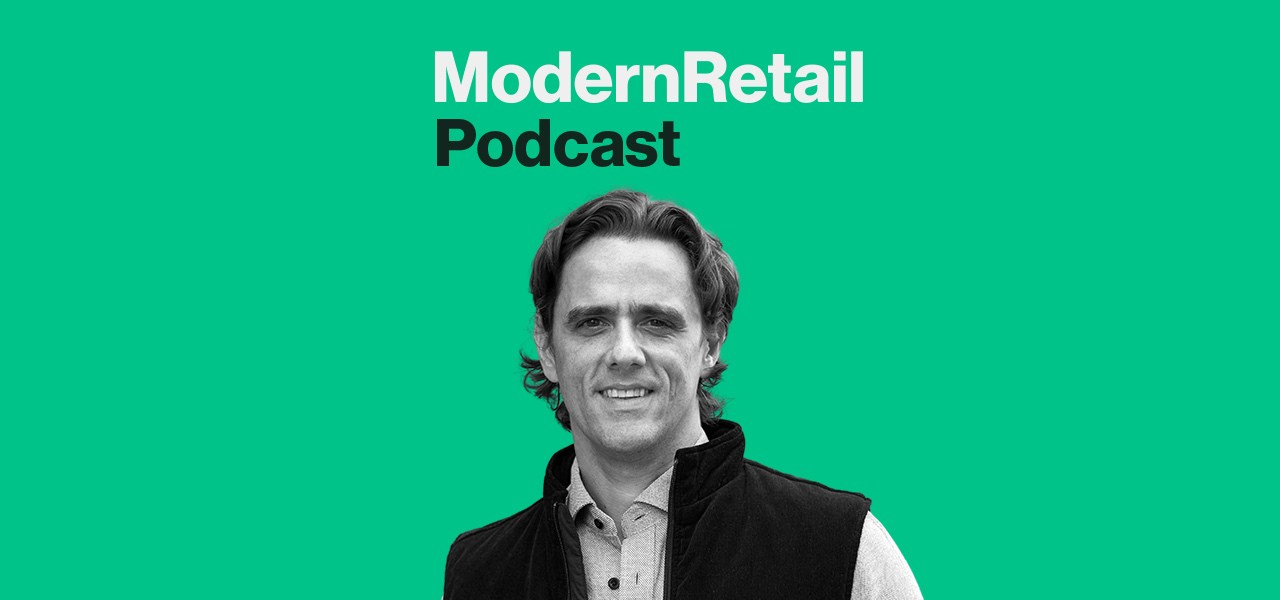‘DTC companies were late to the omnichannel game’: Untuckit’s Aaron Sanandres on leading a dress shirt brand during a pandemic

Subscribe: Apple Podcasts | Stitcher | Google Play | Spotify | RSS
2020 was a tough year for casual dress shirt brand Untuckit, but the company was able to adapt.
While many retailers that catered to workwear completely changed their product lines to mesh better with the pandemic lifestyle, Untuckit opted to wait it out. “The decision was no — no massive overhaul of our brand ethos was necessary,” said Aaron Sanandres, co-founder and CEO. Sanandres joined the Modern Retail Podcast and spoke about all the changes his company experienced.
While Untuckit didn’t drastically change its strategy, it did make some smaller tweaks. Much of that had to do with marketing. The company has become known for casual dress shirts, but it has other products too. “We never really heavily marketed our non-core button-down shirt,” Sanandres said. The new focus, he said, “was shifting the messaging.”
Fulfillment was another big change. While Untuckit began as a digital brand, it’s also opened up over 70 stores over the last few years. The company quickly made those locations fulfillment centers — which Sanandres said was no easy feat. “I’m almost certain almost all DTC companies were late to the game when it comes to buy online pickup in store,” he said. Why? “The fact is, if you’re on Shopify, you will have a very difficult time executing a very clean [experience].”
These changes — along with many other — meant that 2020 was a year of learning. Sanandres described it as humbling. His brand has been in growth mode for the last decade, but had to rethink priorities when stores closed and shopping patterns shifted. “I’m an optimist. I’m always seeing the glass half full opportunity that things are going to get better,” he said. “So this did test me a bit.”
While Sanandres maintained that his company is still growing and healthy — he said the business is still bigger than it was in 2019 — he viewed this year and last as a way to rethink fundamentals. “Maybe it’s an opportunity really to rebalance the business,” he said.
Ad position: web_incontent_pos1
Here are a few highlights from the conversation, which have been lightly edited for clarity.
On staying true to the brand
“We did have the question: ‘Do we want to shift all of our production and reject all the product that was coming in and go to joggers and more Henleys and tees?’ And the decision was no — no massive overhaul of our brand ethos was necessary. We need patience and we need to make sure that we all recognize that we’re going to come out of this. And that when we do there’s only going to be one brand… So it was simply saying, look, let’s do what we can to change the mix of product that’s available; let’s do what we can to change the marketing of product. We never really heavily marketed our non-core button-down shirt. They were in catalogs, but they’re really not in our digital ads; we don’t talk about them in our TV ads. And so it was shifting the messaging that we were giving, but it was still kind of all within that polished casual.”
Figuring out omnichannel
“We also turned our stores into fulfillment centers. We have a lot of ship from store capabilities. This is something that big legacy retailers that move to online were good at day one — that operational ability to ship from store, buy online pick up in store, all that stuff… I hate making broad statements, but I’m almost certain almost all DTC companies were late to the game when it comes to ship from store, were late to the game when it comes to buy online pick up in store. The fact is, if you’re on Shopify, you will have a very difficult time executing a very clean buy online pick up in store. Shopify doesn’t allow you to split carts. So if you add two products — one that’s in the store, one that’s not in the store — Shopify doesn’t allow you to transact that in one transaction. So that is a massive gap for you to be able to to execute a very seamless experience.”
“This tested me a bit”
“We actually got really good at forecasting just through through human learning. We were wrong pretty much every month up until recently. Every month you hear ‘okay, vaccine, we’ll get a million done before the before the end of January.’ You hear a lot of plans, and then you kind of budget to those plans. And you always take a little bit of a haircut. And so we’ve just taken a far more conservative view of what 2021 is going to be. I am an optimist. I’m always seeing the glass half full opportunity that things are going to get better. And so this tested me a bit. But one of the things that that we looked at for 2021 is we don’t see things getting back to any semblance of normal before summer.”

